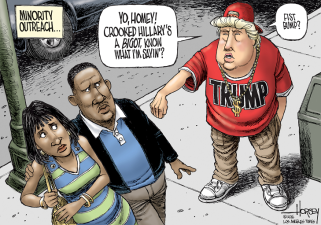
There are, of course, many aspects of the U.S. healthcare system I have not had the opportunity to discuss over the course of this series on Unhealthy Healthcare. I am thinking of the growth of new, profitable medical centers (e.g., for out-patient surgery), plus biotechnology companies, diagnostic clinics, rehabilitation centers, and nursing homes. There are also all the nurses, orderlies, bookkeepers, and administrative staff, primary-care physicians and therapists in rehabilitation services, the hospital volunteers and the underpaid staff who provide care in nursing homes, the dedicated people who set up clinics for underserved populations, and many others who are forced to work under increasingly difficult conditions to provide decent healthcare to the American people.
But no matter how hard those healthcare workers labor, the current system of U.S healthcare is a failure. It provides less healthcare at a higher cost than in other rich countries. And it continues to leave large numbers of Americans, especially workers and the poor, without access to affordable, high-quality healthcare.
The U.S. healthcare system, as it is currently configured, only really works for those who make a profit—selling health insurance, pharmaceuticals, and in-patient and acute-care services in hospitals—and those who have the wherewithal to finance their own healthcare.

As it turns out, the majority of Americans know this. According to the latest Gallup poll, 54 percent of respondents have a somewhat or very negative view of the healthcare industry. And 60 percent have only some, very little, and no confidence in the current medical system. On top of that, 82 percent worry (either a great deal or a fair amount) about the availability and affordability of healthcare in the United States.

In fact, the majority of Americans (58 percent) say they would like to see the 2010 health care law, the Affordable Care Act, replaced with care for all—along the lines presented most recently by presidential candidate Bernie Sanders.
Obviously, workers and poor people in the United States need and want a healthier healthcare system. The question then is, what would should a system look like?
Here I’ll admit, I don’t have a detailed plan of what the U.S. healthcare system should be or how exactly it should be transformed. There are plenty of such plans out there (the best known of which is probably the single-payer program developed back in 1989 by the Physicians for a National Health Program). And I’m not about to develop and present a new one.
Instead, I am guided by a lesson I learned from an old friend (a veteran of more than three decades of working in the trade-union movement): formulate and win people over to the general goal and, once they’re committed to it, let policymakers and stakeholders negotiate and work out the details to reach that goal.
In this case, the goal is universal, affordable, high-quality healthcare.
Such a system would provide high-quality healthcare (physical and mental, encompassing prevention, acute-care, substance-abuse, rehabilitation, and late-life) to all Americans (without exception, especially those who are at the middle and bottom of the economic ladder) at an affordable price (since, as I see it, Americans are willing to pay for decent healthcare but it should be according to their ability to pay, which it currently is not).
That’s it. We shouldn’t care how they provide it. Just that they do so.* And if the key components of the current healthcare system stand in the way, because they’re making profits on how the system is currently organized and don’t want to see real change, they should be bypassed or nationalized (as the case requires). Then, the other private and public entities, the ones actually committed to the goal, can get on with the task of imagining and implementing the universal, affordable, high-quality healthcare system Americans deserve.
*Although, to my view, a healthier healthcare system right now probably involves some combination of single-payer (federal and state) financing and a network of non-profit, community, and cooperative healthcare providers.




















